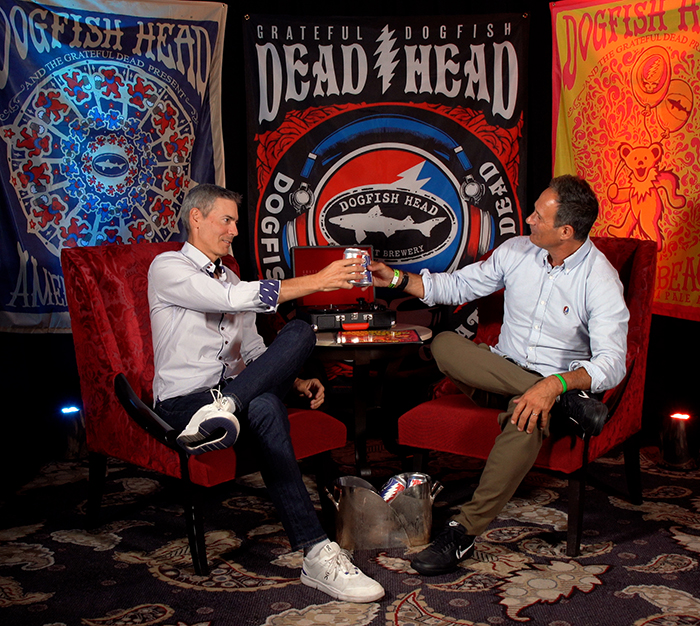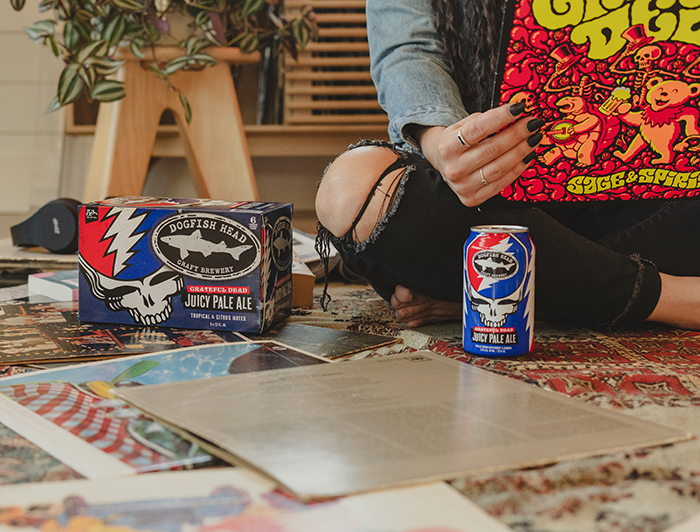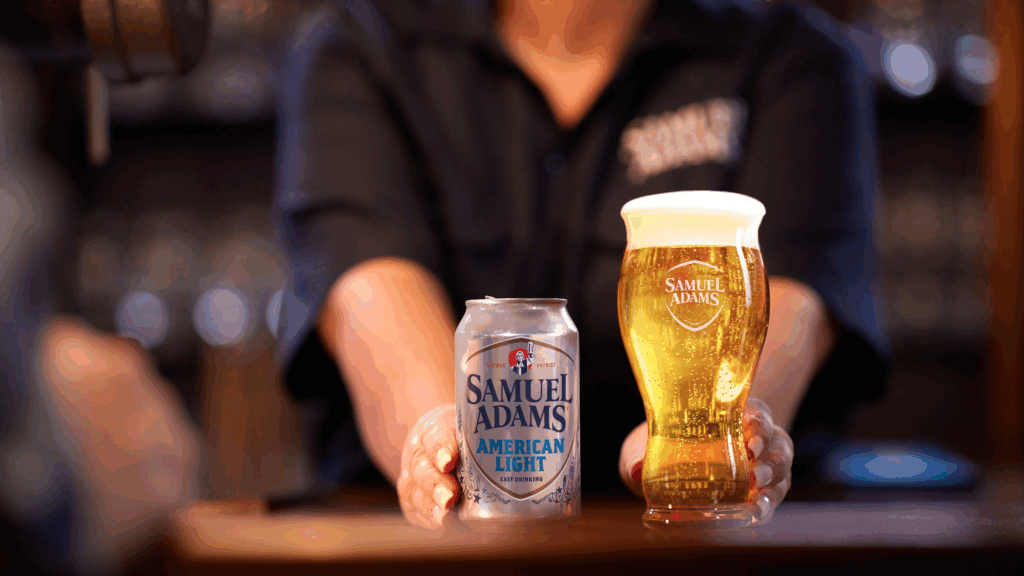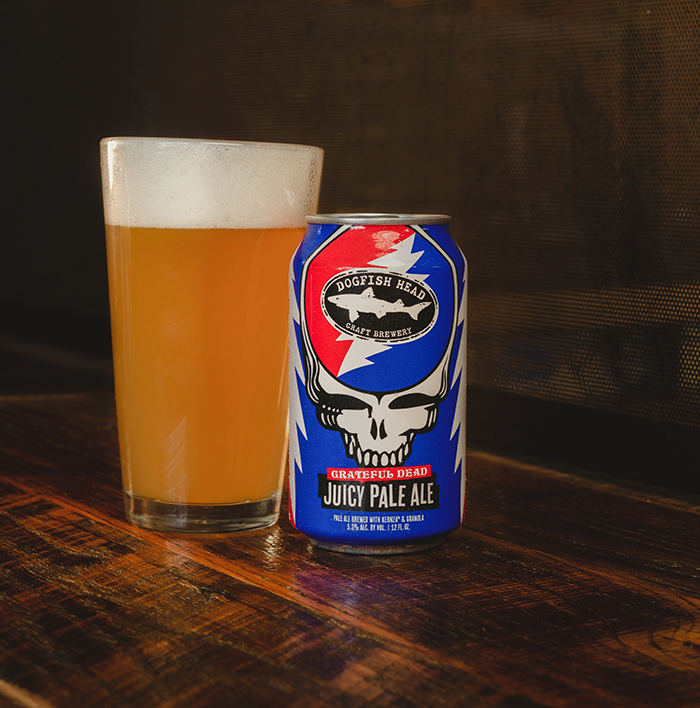Why Boston Beer and Dogfish Head are betting big on bars, beer menus, and Deadhead demand.
By: Joshua M. Bernstein

When Dogfish Head launched Grateful Dead Juicy Pale Ale in 2024, the brewery wasn’t just releasing a new beer – it was striking a chord that resonated far beyond its taps. Featuring the iconic Steal Your Face logo and bursting with tropical flavor, the collaboration with the legendary jam band quickly became a fan favorite. But the success wasn’t just about nostalgia or branding. It signaled a renewed focus by parent company Boston Beer on the power of on-premise experiences – bars, restaurants, and the people behind them – to build lasting brands, drive trial, and reenergize a beer market still rebounding from years of disruption.
Since opening in 1995, Dogfish Head has brewed no shortage of smash beers, from 90 Minute IPA to SeaQuench Ale to World Wide Stout. But the brewery created a record-breaking beer by banding together with, well, a band. Since Grateful Dead Juicy Pale Ale debuted last year, the juicy brew quickly became the “fastest-growing beer launch in the history of Dogfish Head,” says Founder Sam Calagione, adding that the pale ale celebrates the brewery’s 30th and the band’s 60th anniversaries.

The timing couldn’t have been better. Over the last two decades, the Grateful Dead has seen a massive cultural resurgence. From their celebrated residency at the Las Vegas Sphere to their recent honor at the Kennedy Center, the band has reclaimed a prominent place in the American cultural imagination. Dogfish Head and Boston Beer weren’t just capitalizing on nostalgia – they were catching a cultural moment with authenticity and flair.
One week this spring, Dogfish Head brewed 14 batches of the pale ale, or roughly 2,800 barrels. “That’s more beer than Dogfish Head brewed in our first two years that we were open,” Calagione says. The beer has become a major growth driver for the brewery after years of stagnation. That momentum is no accident: both Dogfish Head and the Grateful Dead are OGs in their respective fields – unscripted, enduring, and always finding ways to reinvent themselves.

The success of Grateful Dead Juicy Pale Ale is buoyed by Boston Beer’s renewed importance on building brands through on-premise channels, including restaurants and bars, that have been “somewhat neglected,” as Founder and Chairman Jim Koch has said. Boston Beer’s strategic plans for 2025 seek to streamline operations and strengthen market presence by boosting investments in brands including Twisted Tea and Samuel Adams American Light.
Amplifying consumer engagement and enhancing execution in all sales channels will help Boston Beer meet today’s customers wherever they shop and whatever they drink, be it an Angry Orchard cider or Boston Lager.
Staff Education Is Essential to On-Premise Success
Five years ago, the Covid pandemic forced bars and restaurants to shutter to alleviate viral spread. They had to furlough and lay off workers, many of whom permanently left the hospitality industry. “When bars and restaurants reopened, there was a shortage of trained staff,” says Kurt Wilson, Senior Director of On-premise at the Boston Beer Company. Businesses prioritized navigating a challenged hospitality landscape. Training often fell by the wayside, creating a shortfall of staff that could smartly steer uncertain customers to the right IPA or Imperial stout. “It was the grand reset of staff,” Wilson says.
But the benefit of having a knowledgeable, engaged staff goes beyond just making a sale – it’s about creating an experience that draws people out of their homes. Bars and restaurants today aren’t just competing with each other – they’re up against streaming services, cannabis use, and a growing preference for staying in. For younger LDA consumers, going out needs to feel worth it. A bartender who can connect with guests and introduce them to something new can make all the difference.
To aid with education, Boston Beer created an online training system featuring short, TikTok-style videos that teach people how to quickly and eloquently describe the company’s beers to “stimulate guest interest,” Wilson says. Catering to on-premise customers requires a more personal touch. When a customer shops off-premise, they’re often buying for friends and family. But people bending elbows at bars are making personal decisions when ordering a pint. They’re also often open to trying something new.
Moreover, a majority of consumers enter on-premise accounts without a predetermined drink in mind. According to a Boston Beer study, “only 13% of people leave the house going, ‘I’m going to drink Boston Lager when I get to the restaurant,’” Wilson says, adding that people select drinks after gathering more information. “A menu is the number one thing that helps them make a decision.”
That’s why a well-trained staff and a compelling draught program aren’t just nice-to-haves – they’re essential tools for turning curiosity into loyalty. Operators may believe cocktails with clever names deliver bigger margins, but an intentional draught list, properly poured and promoted, keeps guests lingering longer and spending more.

Helping Retailers Fine-Tune Sales Techniques
For bar and restaurant owners, the real question isn’t how to help Boston Beer sell more Grateful Dead Juicy Pale Ale – it’s how that beer helps drive traffic, engagement, and repeat visits. Guests who try something new are more likely to talk about it, post about it, and return for more. A distinctive draught beer gives them a reason to sit down – and stay.
To help on-premise accounts increase sales, Boston Beer sales staff will help retailers lay out beer menus, plus advise on point-of-sale marketing such as mirrors that might advertise a specific beer or brand. “Believe it or not, people actually look at those,” Wilson says. If the mirror advertises a discontinued brand, or one that’s no longer stocked, then that’s a lost marketing and sales opportunity.
“The benefit of having a knowledgeable, engaged staff goes beyond just making a sale – it’s about creating an experience that draws people out of their homes.”
– KURT WILSON Senior Director of On-premise at the Boston Beer Company
Eye-catching tap handles are also important. During the 2010s era of Edison light bulbs and bare brick walls, modern bars embraced tiny black tap handles as part of a minimalistic aesthetic. Calagione wasn’t a fan. “They did an injustice to the unique personality of the beverages on tap,” he says. “We treat our draught tap handles as artwork, as much as we do our recipes, and we want the opportunity to put those sculptures up in every on-premise location.”
To compete with the allure of cocktails, bars can elevate draught beer through creative presentation like distinct glassware, proper foam, and even beer ‘cocktails’ like a salted SeaQuench Ale.
Why On-Premise Remains a Stronghold for Building Brands
Still, some operators may wonder: Why double down on draught at all when craft beer headlines look shaky? The answer is simple: it’s about offering an experience worth showing up for. A memorable beer served the right way can set a venue apart. And when done well, the draught program becomes a powerful profit center, not just a rotating tap list.
The average grocery store or beer distributor offers dozens, if not hundreds of different beers. So those who try a new brand they like at a bar or restaurant are able to stop by one of these stores (maybe even on their way home) to pick up a 12-pack of that beverage.
About the Author: Award-winning beer journalist Joshua M. Bernstein is the author of six books, including The Complete Beer Course.
